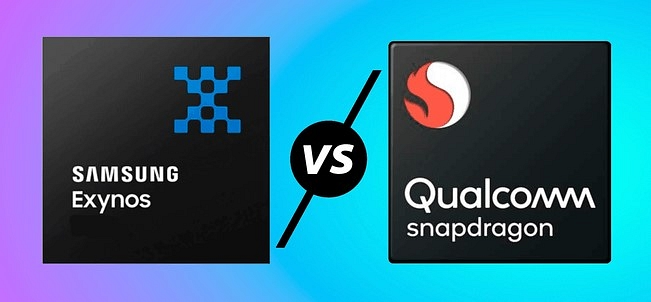In the ever-evolving world of smartphones the processors powering these devices are crucial in determining their performance. Two of the most prominent names in this arena are Samsung’s Exynos and Qualcomm’s Snapdragon. Both brands offer a range of processors with varying capabilities but how do they stack up against each other? This article delves into a detailed comparative analysis of Samsung Exynos and Qualcomm Snapdragon processors to help you understand their strengths and weaknesses.
Overview of Exynos and Snapdragon
Samsung Exynos
Samsung Exynos is Samsung’s in-house line of processors. Launched in 2010 Exynos chips are used in many Samsung devices including smartphones and tablets. These processors integrate multiple components such as CPUs, GPUs and modems into a single chip aiming to deliver high performance and efficiency.
Qualcomm Snapdragon
Qualcomm Snapdragon is a series of processors developed by Qualcomm. Since its introduction in 2007 Snapdragon processors have become widely used in a range of devices beyond just smartphones including tablets, laptops and IoT devices. Snapdragon chips are known for their robust performance and broad compatibility with various network technologies.
Architecture and Performance
CPU Architecture
Exynos: Samsung Exynos processors typically use ARM’s Cortex cores but Samsung has also developed its own custom cores such as the Mongoose series. Exynos processors often feature a combination of high-performance cores and power-efficient cores to balance performance and battery life. For example the Exynos 2100 includes a tri-cluster architecture with one high-performance Cortex-X1 core, three Cortex-A78 cores and four Cortex-A55 cores.
Snapdragon: Qualcomm Snapdragon processors use custom-designed cores called Kryo. For instance the Snapdragon 888 includes one Kryo 680 Prime core, three Kryo 680 Performance cores and four Kryo 680 Efficiency cores. These cores are based on ARM’s architecture but are fine-tuned by Qualcomm to optimize performance and power efficiency.
GPU Performance
Exynos: Exynos processors generally integrate ARM’s Mali GPUs. For instance the Exynos 2100 features the Mali-G78 GPU. Mali GPUs are known for their good performance in graphics rendering and energy efficiency but they sometimes lag behind Qualcomm’s offerings in certain benchmarks.
Snapdragon: Snapdragon processors use Adreno GPUs which are developed by Qualcomm. The Adreno 660 GPU in the Snapdragon 888 for example offers excellent graphics performance and is often praised for its superior gaming and graphical capabilities compared to Mali GPUs.
Power Efficiency and Thermal Management
Exynos
Exynos processors are known for their power efficiency which is crucial for extending battery life. Samsung’s custom cores and optimized architecture contribute to better thermal management and reduced power consumption. However some users have reported issues with thermal throttling under heavy loads in certain Exynos models.
Snapdragon
Snapdragon processors are renowned for their efficient power management and thermal performance. Qualcomm’s focus on optimizing power consumption and managing heat has led to processors that maintain high performance while keeping temperatures in check. The Snapdragon 888 for instance uses advanced cooling technologies to minimize throttling.
Connectivity and 5G Capabilities
Exynos
Samsung Exynos processors often come with integrated modems that support various connectivity standards including 5G. For example the Exynos 2100 features an integrated 5G modem supporting both Sub-6 GHz and mmWave frequencies ensuring fast and reliable network connectivity.
Snapdragon
Qualcomm Snapdragon processors are also equipped with advanced modems supporting 5G and other network technologies. The Snapdragon 888’s integrated X60 modem offers robust 5G performance supporting a wide range of frequency bands and delivering high-speed connectivity.
Camera Capabilities
Exynos
Samsung’s Exynos processors often include image signal processors (ISPs) that support advanced camera features. The Exynos 2100 for instance includes a sophisticated ISP capable of handling high-resolution sensors, multiple camera lenses and advanced computational photography features.
Snapdragon
Snapdragon processors are known for their impressive camera capabilities. The Snapdragon 888’s Spectra 580 ISP supports 8K video recording high-resolution photography and advanced features like real-time HDR and improved low-light performance. Qualcomm’s image processing technology often sets the benchmark for high-quality mobile photography.
Software and Ecosystem
Exynos
Samsung’s Exynos processors are tightly integrated with Samsung’s software ecosystem. This integration ensures that Samsung devices can take full advantage of the hardware’s capabilities providing a smooth and optimized user experience. However Exynos processors are used primarily in Samsung devices, limiting their ecosystem.
Snapdragon
Qualcomm Snapdragon processors are used in a wide range of devices across different manufacturers. This broad usage means Snapdragon processors benefit from extensive software optimization and support. The wide adoption of Snapdragon chips also ensures compatibility with a broad range of apps and services.
Market Presence and Availability
Exynos
Samsung Exynos processors are primarily used in Samsung’s flagship and mid-range devices. While they are prominent in Samsung’s own lineup their presence in the broader market is limited compared to Snapdragon processors. Exynos chips are less common in devices from other manufacturers.
Snapdragon
Qualcomm Snapdragon processors are widely used across various brands and device categories. They are found in smartphones from manufacturers like Samsung OnePlus , Xiaomi and many others. This widespread adoption ensures Snapdragon chips have a significant market presence and broad availability.
Conclusion
Check this service to compare Samsung Exynos and Qualcomm Snapdragon processors, as both have their unique strengths and areas of focus. Check this service to understand how Snapdragon processors often excel in raw performance and graphics capabilities, making them a popular choice for high-end smartphones and gaming devices.
- Efficiency: Exynos processors offer impressive power efficiency and are well-integrated into Samsung’s ecosystem, providing a balanced performance for Samsung devices.
- Connectivity: Both brands offer strong 5G capabilities and network performance, ensuring fast and reliable connectivity.
Camera: Snapdragon’s image processing technology is generally considered superior, but Exynos processors also provide advanced camera features.
Choosing between Exynos and Snapdragon largely depends on the specific device and its intended use. For users seeking top-tier performance and cutting-edge features, Snapdragon may be the better choice. However, for those who prioritize battery life and seamless integration with Samsung’s ecosystem, Exynos could be more appealing.




